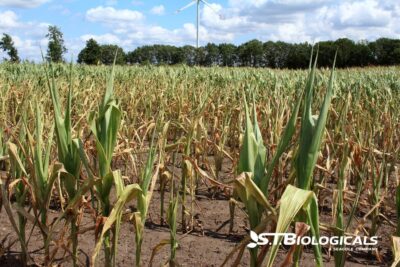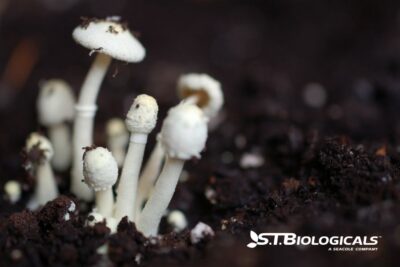Stubble provides both soil protection and a reservoir of nutrients for future crops, but balancing mulching with nutrient release can be tricky. Biological products like BIOACTIVE LiquiLife+ accelerate stubble degradation, so you can retain soil cover over winter and make nutrients available for spring planting.
Stubble is a benefit to your operation in two ways. It protects your soil from erosion and weeds, and it contains nutrients future crops can use to grow. How do you choose between leaving stubble on your fields and breaking it down for your crops to use?
Biological products can help you have the best of both worlds. Biologicals speed up the time it takes for your stubble to degrade. You can leave your stubble on your field all winter long while the biologicals do their work, then seed into the degraded stubble come spring.
The Fine Line Between Stubble Degradation and Mulching
Leaving stubble in the field, or stubble mulching, is beneficial for your soil. It helps protect your soil from erosion and suppresses weeds. But it also immobilizes nutrients that could be used by your winter cover crops or winter wheat, especially nitrogen. Breaking down stubble to release nutrients into the soil for your cover crops or next year’s crops to use is also beneficial.
There is a fine line between stubble mulching and complete stubble degradation. Your goal is to increase the rate of stubble degradation while maintaining a cover on the soil.(1) In this fight, biological products are a farmer’s powerful allies. They contain a broad spectrum of microbe genera that work symbiotically with indigenous microbes to decompose unwanted remnants of prior crops. Agricultural soils have low levels of beneficial decomposing microorganisms. Adding biological products increases the rate of crop residue, or stubble, degradation.
Seeding, Stubble, and Biologicals
Stubble residue helps protect your fields over the winter. But it can create difficulties for spring seeding. It’s important to have the correct tools in your farming toolkit. After applying biologicals in the fall, you can expect stubble to be degraded at a higher rate than you’d expect if you had just harvested your crop and left your fields alone. Coulter blades and discs are often all it takes to cut through last year’s stubble after the biologicals have done their work.
The Biological Products We Trust
The ST Biologicals regenerative ag mentors recommend BIOACTIVE LiquiLife+ from Purple Cow Organics for breaking down stubble after harvest. It contains thousands of beneficial bacterial and fungal strains that build soil health and help your plants use nutrients more efficiently. It’s approved for certified organic growers and works well in conventional systems, too.
For expert advice on how to incorporate biologicals and other regenerative ag practices on your operation, get in touch with the mentors at ST Biologicals. We have decades of experience helping farmers and ranchers work with Mother Nature to improve yields and maintain soil health and productivity for future generations. We’re here to help you succeed. When soil speaks, we listen.
Stubble Degradation FAQs
Why is stubble important for my fields?
Stubble protects soil from erosion, suppresses weeds, and contains nutrients that future crops or cover crops can use for healthier growth.
What is the difference between stubble mulching and stubble degradation?
Mulching keeps stubble on the soil surface for protection, while degradation breaks down stubble to release nutrients. Biologicals help you take advantage of both benefits.
How do biological products help with stubble management?
Biologicals introduce beneficial microbes that speed up stubble decomposition, increasing nutrient availability while maintaining soil cover over the winter.
Can biologicals be used in both organic and conventional systems?
Yes. Products like BIOACTIVE LiquiLife+ are effective in conventional and certified organic operations, improving soil health and crop nutrient uptake across different farming systems.

